When the summer heat rolls in and appetite rolls out, Zaru Soba might just be the perfect answer. These chilled Japanese buckwheat noodles, traditionally served with a light, umami-rich dipping sauce called tsuyu, are the ultimate refreshment in a bowl. Not only are they a nostalgic nod to Japanese countryside cooking, but they’re also incredibly easy to make at home with a handful of pantry staples.
Whether you’re craving something light, prepping a quick lunch, or longing for a taste of Japan without the plane ticket, Zaru Soba delivers pure comfort and simplicity—no fancy tools, no obscure techniques. This version keeps it real with clean flavors, cooling textures, and an optional plant-based twist for vegan eaters.
Let’s dive into this deceptively simple yet deeply satisfying noodle dish.
What is Zaru Soba?
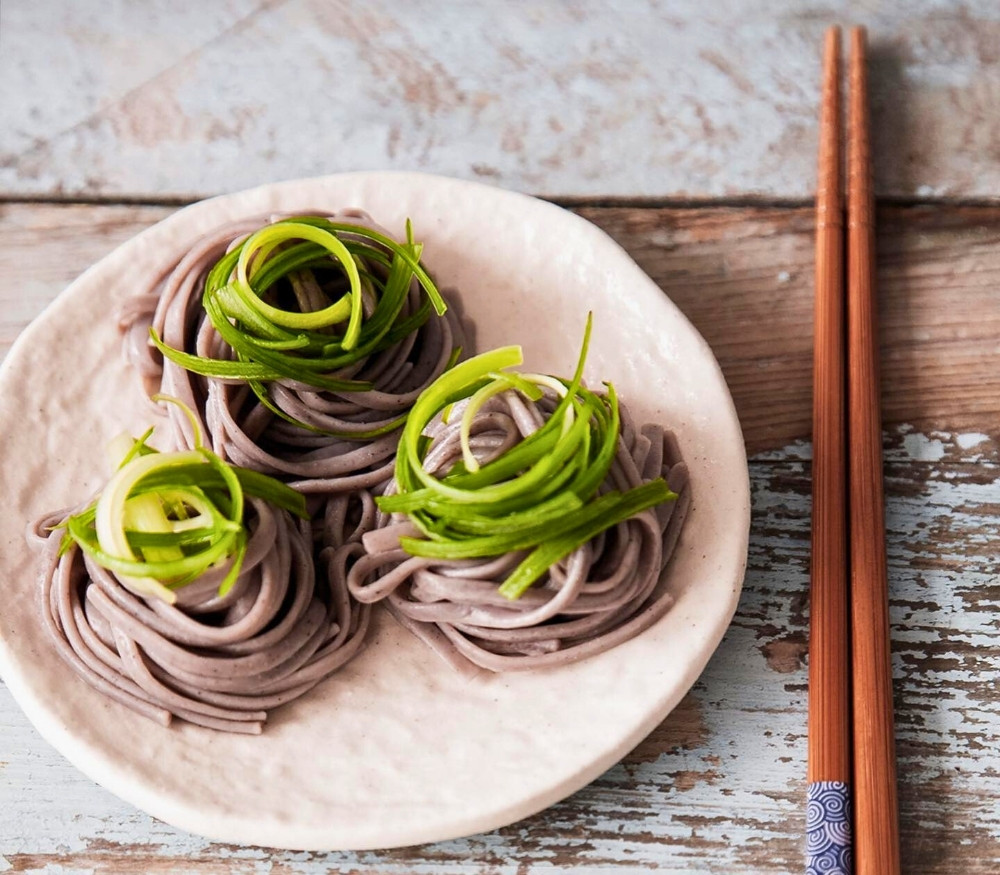
Zaru Soba (ざるそば) is a classic Japanese dish made with chilled soba noodles (buckwheat noodles) served on a bamboo tray called a zaru, accompanied by a dipping sauce (tsuyu) made of soy sauce, mirin, and dashi. It’s often garnished with finely sliced spring onions, wasabi, and sometimes nori (seaweed).
This dish is light, hydrating, and incredibly flavorful, making it ideal for warm weather or anytime you’re craving a minimalist yet comforting meal.
Why You’ll Love This Cold Soba Noodle Recipe
- Quick & Easy – Ready in under 30 minutes.
- Plant-Based Friendly – Easily made vegan with one simple swap.
- No-Fuss Ingredients – You probably already have most of them.
- Cooling & Refreshing – The ultimate summer lunch.
- Authentic Taste – Brings the flavors of rural Japan into your home.
Ingredients Breakdown: Simple but Essential
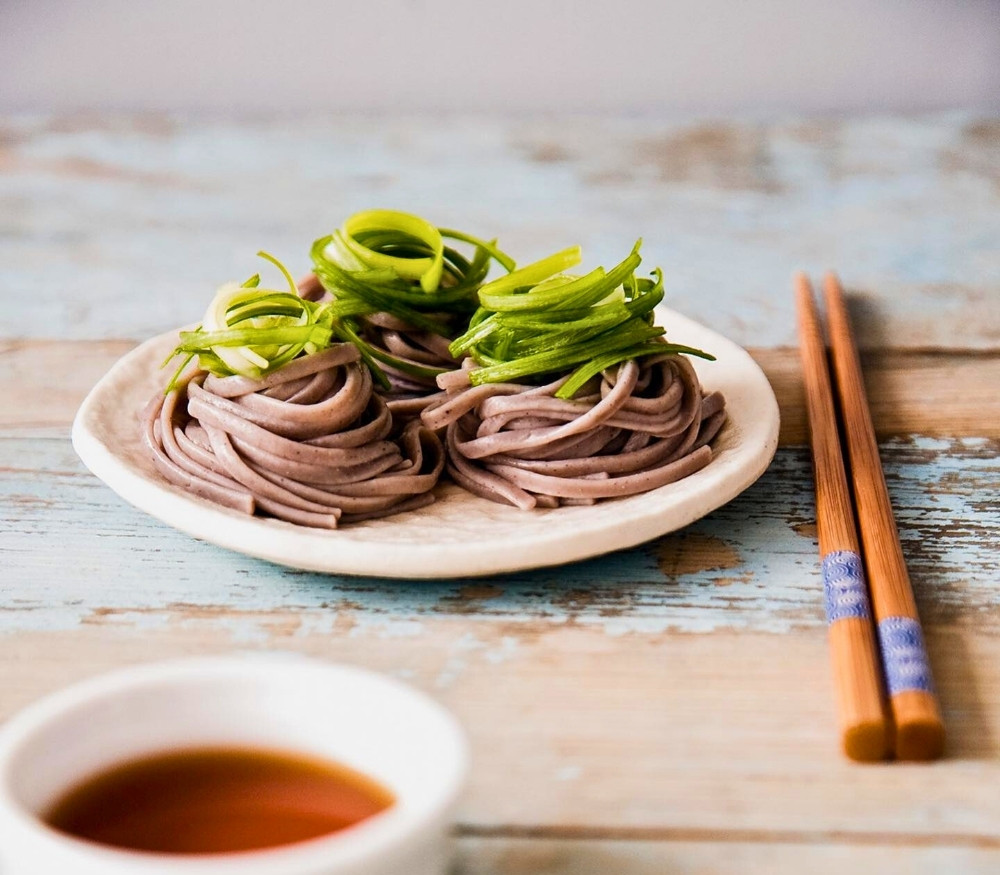
Here’s what you’ll need to make this recipe come alive:
For the Noodles:
- 400g dried soba noodles – Look for a brand with 100% buckwheat if gluten-free is your goal, or a wheat blend for a more elastic texture.
- Cold water – For rinsing and shocking the noodles after cooking.
For the Dipping Sauce (Tsuyu):
- 50ml soy sauce – Use a high-quality shoyu for best flavor.
- 50ml mirin – Adds a gentle sweetness that balances the soy.
- 600ml dashi stock – This can be made with bonito flakes and kombu or subbed with vegan dashi made from shiitake mushrooms and kombu.
Garnishes:
- 4 spring onions, finely shredded
- Optional: Grated daikon, wasabi, shredded nori, toasted sesame seeds
The Secret to Perfectly Cooked Soba Noodles
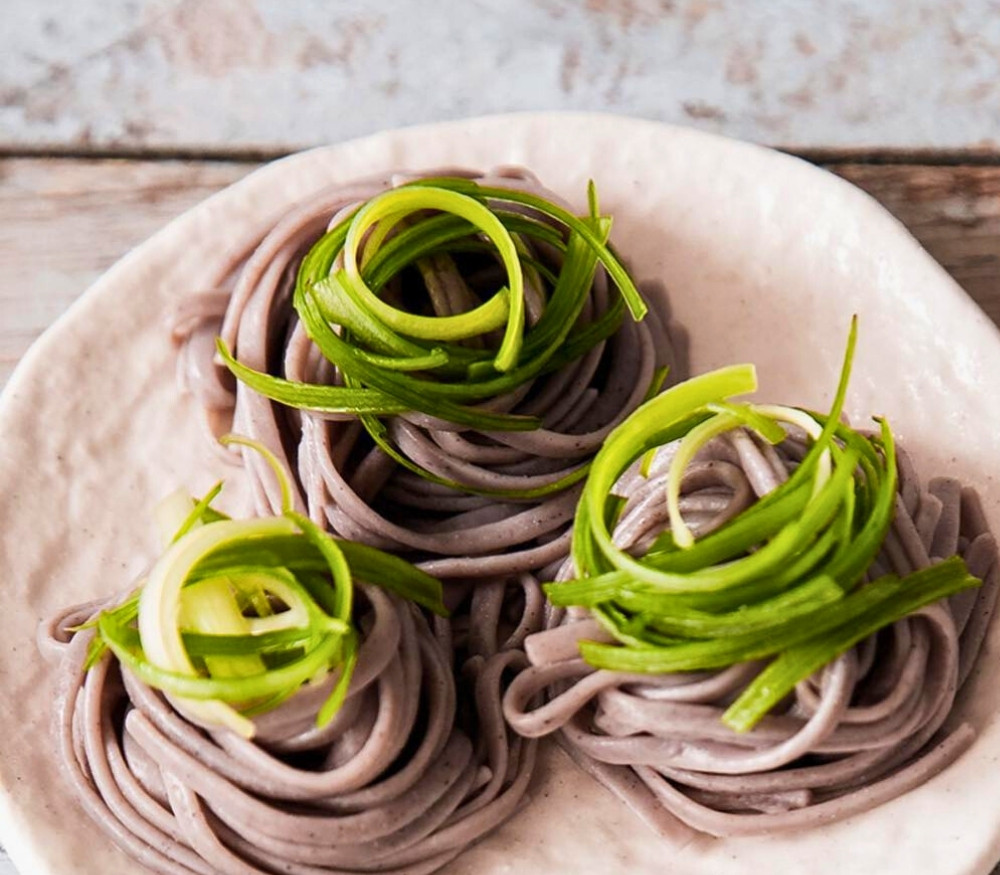
Unlike pasta, soba needs a little TLC:
- Boil a large pot of water, no salt needed.
- Add soba quickly and stir immediately to prevent sticking.
- Once the water returns to a boil, add a splash of cold water. Repeat this 1-2 times. This technique helps the noodles cook evenly.
- Taste test for doneness—it should be firm but tender.
- Drain and rinse thoroughly under cold running water, rubbing gently to remove excess starch.
- Optionally, place noodles in a bowl of ice water for a minute before draining again for the ultimate chill factor.
Make-Ahead Tsuyu: Flavor That Deepens in the Fridge
You can (and should!) make the dipping sauce ahead of time. Letting the tsuyu rest in the fridge for an hour—or overnight—allows the flavors to meld beautifully.
Pro Tip: If you’re making vegan tsuyu, soak kombu and dried shiitake in water for a few hours or overnight, then simmer gently and strain. The umami is next level.
How to Serve Zaru Soba Like a Pro
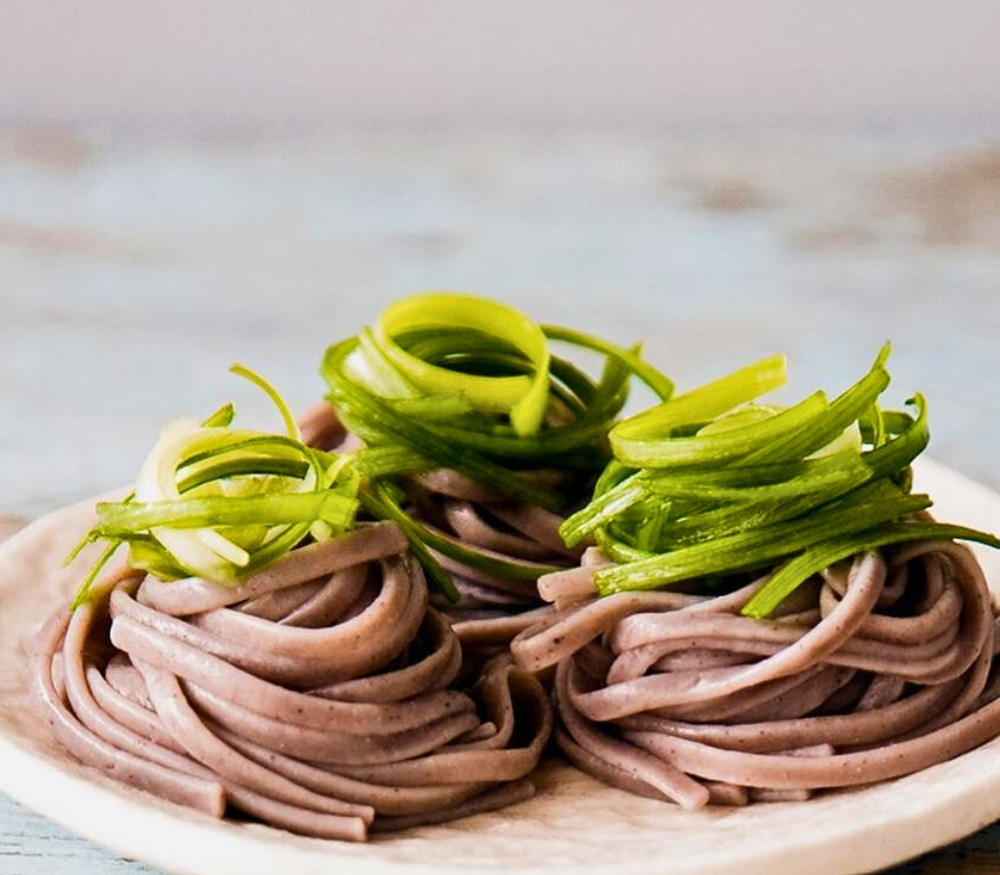
Traditional Zaru Soba is served on a bamboo mat (zaru) to allow air circulation and keep the noodles from sitting in moisture. But don’t stress—a plate or shallow bowl works just fine.
Serve the noodles with:
- A personal bowl of dipping sauce
- Garnishes on the side so each eater can customize
How to eat it: Grab a few strands of noodles with your chopsticks, dip into the sauce, and slurp. Loud slurping is not only accepted in Japan—it’s encouraged.
Optional Add-Ons & Variations
This dish is beautiful in its simplicity, but it’s also versatile:
- Top with nori strips for extra umami and texture.
- Add wasabi or grated daikon for a spicy kick.
- Toss in chilled tofu cubes or a soft-boiled egg for protein.
- Serve alongside tempura for a more filling meal.
Make it Vegan (and Gluten-Free)
To make vegan Zaru Soba:
- Use vegan dashi made from kombu and dried shiitake.
- Make sure your soy sauce is vegan (most are, but check the label).
- Choose 100% buckwheat soba for gluten-free diets.
Storing Leftovers (and Why You Might Not Want To)
Zaru Soba is best served fresh. The noodles tend to dry out or become too soft after storage, and the dipping sauce can lose its clarity of flavor.
That said:
- Store noodles and sauce separately in airtight containers.
- Keep both in the fridge and use within 1 day.
- Rinse the noodles again before serving to refresh their texture.
More Than a Meal: A Culinary Postcard from Japan
Eating Zaru Soba isn’t just about sustenance—it’s a calming ritual. The cold slurp of noodles, the delicate balance of salty-sweet-umami dipping sauce, and the moment of quiet simplicity—it all captures a slice of Japanese home cooking that feels both humble and artful.
So even if your travel plans are on hold or the nearest soba restaurant is miles away, you can still bring a little Japan to your table, one chilled noodle strand at a time.
Whether you’re new to Japanese cooking or a seasoned lover of umami, this Zaru Soba recipe is a keeper—especially on days when you want something light, quick, and soul-satisfying.
Try it once, and you’ll be hooked all summer.
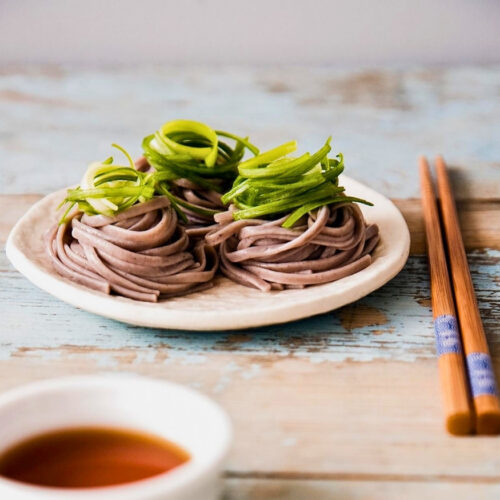
Cold Zaru Soba Noodles with Dipping Sauce
Ingredients
Noodles & Garnish
- 400 g dried soba noodles
- 4 spring onions finely shredded
Dipping Sauce
- 50 ml soy sauce
- 50 ml mirin
- 600 ml dashi stock use vegan dashi if preferred
Instructions
Prepare the Dipping Sauce
- In a bowl, mix soy sauce and mirin into the dashi stock. Transfer to the refrigerator and chill for at least 50 minutes before serving.
Cook and Rinse the Soba Noodles
- Bring a large pot of water to a boil. Add the dried soba noodles quickly and stir to prevent sticking.
- When the water returns to a boil, add about 1/2 cup of cold water to reduce the temperature. Repeat this step once or twice depending on the dryness of the noodles.
- Test noodle doneness by pinching or cutting a strand—it should be just tender.
- Drain the noodles in a colander or sieve. Rinse thoroughly under cold running water, rubbing gently to remove excess starch.
- Drain again and set aside.
Serve
- Arrange the cold soba noodles on serving dishes.
- Garnish with finely shredded spring onions.
- Serve with individual bowls of chilled dipping sauce on the side.
Notes
- For a gluten-free version, use 100% buckwheat soba and gluten-free soy sauce.
- To make the dish vegan, use kombu and dried shiitake to prepare vegan dashi.
- Adding cold water while cooking helps noodles cook evenly from inside out.
- Rinse noodles thoroughly to remove starch and prevent gumminess.
Leave a Reply